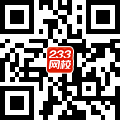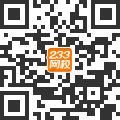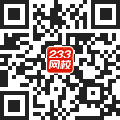2011年12月英語四級全真預(yù)測試卷及答案(1)
- 第1頁:partI Writing
- 第2頁:Part II skimming and scanning
- 第3頁:Part IV Reading in Depth Section A
- 第4頁:Part IV Reading in Depth Section B
- 第5頁:Part IV Reading in Depth答案
- 第6頁:Part V Cloze
- 第7頁:Part V Cloze 答案
- 第8頁:Part VI Translation及 答案
- 第9頁:Part III Listening Comprehension Section A
- 第10頁:Part III Listening Comprehension Section B
- 第11頁:PartIIIListeningComprehension答案
Part V Cloze (15 minutes)
Directions: There are 20 blanks in the following passage. For each blank there are four choices marked [A],[B],[C]and [D] on the right side of the paper. You should choose the ONE that best fits into the passage. Then mark the corresponding letter on Answer Sheet 2 with a single line through the center.
Reading involves looking at graphic symbols and formulating mentally the sounds and ideas they represent. Concepts of reading have changed 67 over the centuries. During the 1950s especially, increased attention has been devoted to 68 and describing the reading process. 69 specialists agree that reading 70 a complex organization of higher mental 71 , they disagree 72 the exact nature of the process. Some experts, who regard language primarily as a code using symbols to represent sounds, 73 reading as simply the decoding of symbols to the sounds they stand 74 .
These authorities 75 that meaning, being concerned with thinking, must be taught independently of the decoding process. Others maintain that reading is 76 related to thinking, and that a child who pronounces sounds without 77 their meaning is not truly reading. The reader, 78 to some, is not just a person with a theoretical ability to read but one who 79 reads.
Many adults, although they have the ability to read, have never read a book in its 80 . By some experts they would not be 81 as readers. Clearly, the philosophy, objectives, methods and materials of reading will depend on the definition one uses. By the most 82 and satisfactory definition, reading is the ability to 83 the soundsymbols’ code of the language, to interpret meaning for various 84 , at various rates, and at various levels of difficulty, and to do 85 widely and enthusiastically. 86 short, reading is the interpretation of ideas through the use of symbols representing sounds and ideas.
67. [A] substantively [B] substantially [C] substitutively [D] subjectively
68. [A] distributing [B] promoting [C] defining [D] reporting0
69. [A] Although [B] If [C] Unless [D] Until
70. [A] involves [B] takes [C] reveals [D] invites
71. [A] opinions [B] effects [C] manners [D] functions
72. [A] of [B] about [C] for [D] into
73. [A] view [B] look [C] reassure [D] agree
74. [A] by [B] to [C] off [D] for
75. [A] content [B] contend [C] contempt [D] contact
76. [A] inexplicably [B] inexpressibly [C] inextricably [D] inexpediently
77. [A] interpreting [B] telling [C] explaining [D] reading
78. [A] like [B] for [C] according [D] as
79. [A] totally [B] usually [C] mainly [D] actually
80. [A] part [B] entirety [C] chapter [D] section
81. [A] claimed [B] said [C] classified [D] graded
82. [A] inclusive [B] inclinable [C] conclusive [D] complicated
83. [A] break [B] elaborate [C] define [D] unlock
84. [A] purposes [B] degrees [C] stages [D] steps
85. [A] such [B] so as [C] so [D] such as
86. [A] By [B] In [C] On [D] To
Directions: There are 20 blanks in the following passage. For each blank there are four choices marked [A],[B],[C]and [D] on the right side of the paper. You should choose the ONE that best fits into the passage. Then mark the corresponding letter on Answer Sheet 2 with a single line through the center.
Reading involves looking at graphic symbols and formulating mentally the sounds and ideas they represent. Concepts of reading have changed 67 over the centuries. During the 1950s especially, increased attention has been devoted to 68 and describing the reading process. 69 specialists agree that reading 70 a complex organization of higher mental 71 , they disagree 72 the exact nature of the process. Some experts, who regard language primarily as a code using symbols to represent sounds, 73 reading as simply the decoding of symbols to the sounds they stand 74 .
These authorities 75 that meaning, being concerned with thinking, must be taught independently of the decoding process. Others maintain that reading is 76 related to thinking, and that a child who pronounces sounds without 77 their meaning is not truly reading. The reader, 78 to some, is not just a person with a theoretical ability to read but one who 79 reads.
Many adults, although they have the ability to read, have never read a book in its 80 . By some experts they would not be 81 as readers. Clearly, the philosophy, objectives, methods and materials of reading will depend on the definition one uses. By the most 82 and satisfactory definition, reading is the ability to 83 the soundsymbols’ code of the language, to interpret meaning for various 84 , at various rates, and at various levels of difficulty, and to do 85 widely and enthusiastically. 86 short, reading is the interpretation of ideas through the use of symbols representing sounds and ideas.
67. [A] substantively [B] substantially [C] substitutively [D] subjectively
68. [A] distributing [B] promoting [C] defining [D] reporting0
69. [A] Although [B] If [C] Unless [D] Until
70. [A] involves [B] takes [C] reveals [D] invites
71. [A] opinions [B] effects [C] manners [D] functions
72. [A] of [B] about [C] for [D] into
73. [A] view [B] look [C] reassure [D] agree
74. [A] by [B] to [C] off [D] for
75. [A] content [B] contend [C] contempt [D] contact
76. [A] inexplicably [B] inexpressibly [C] inextricably [D] inexpediently
77. [A] interpreting [B] telling [C] explaining [D] reading
78. [A] like [B] for [C] according [D] as
79. [A] totally [B] usually [C] mainly [D] actually
80. [A] part [B] entirety [C] chapter [D] section
81. [A] claimed [B] said [C] classified [D] graded
82. [A] inclusive [B] inclinable [C] conclusive [D] complicated
83. [A] break [B] elaborate [C] define [D] unlock
84. [A] purposes [B] degrees [C] stages [D] steps
85. [A] such [B] so as [C] so [D] such as
86. [A] By [B] In [C] On [D] To
更多推薦:
2011年12月英語四級全真模擬試卷匯總
2011年6月英語四級考試全真預(yù)測試卷
2011年6月英語四級全真模擬題匯總
相關(guān)推薦
課程免費試聽
| ?γ??????? | ??? | ???/???? | ??????? | ???? |
|---|---|---|---|---|
| ????????????????????????????????? | ????? | ??100 / ??100 |  |
???? |
| ???????????????????????? | ????? | ??100 / ??100 |  |
???? |
| ???????????????????????? | ????? | ??100 / ??100 |  |
???? |
| ??????????????????д???? | ????? | ??100 / ??100 |  |
???? |
????0??????
????????????????







